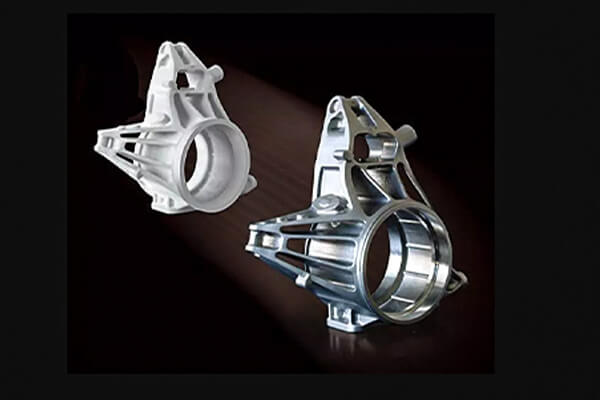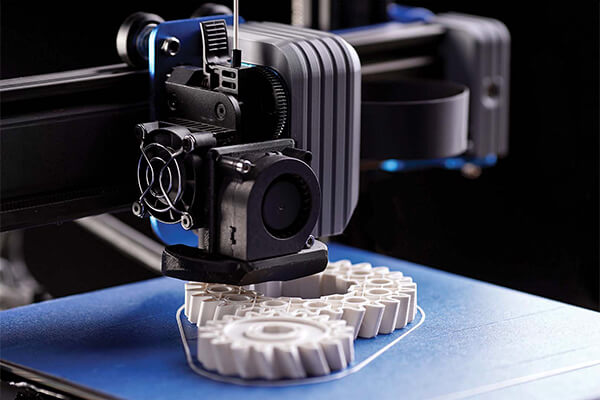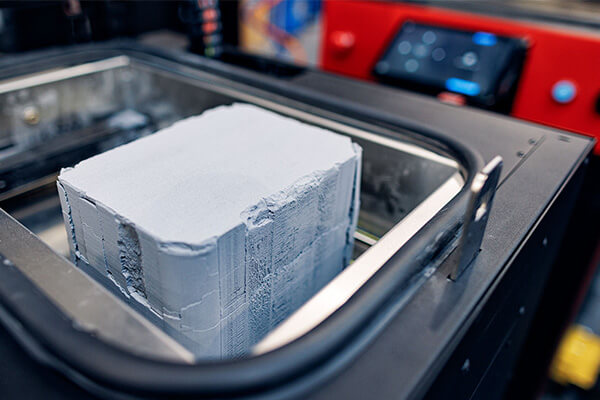Prototype Parts Manufacturing Overview
Prototype parts are a critical step of the product development process. Prototype parts can be used as models for casting and other manufacturing processes, as well as for functional testing, proof of concept, and sales demonstrations.
Today, there are numerous additive and subtractive prototype parts production techniques available. For various requirements in prototype parts production, these technologies offer various advantages. We’ll discuss some of the most popular prototyping methods and how you might use them for your upcoming project.
Sungplastic specializes in prototype parts production with ample practice experience. We are ready for solving the problems for you. Please read more.

Stereolithography (SLA)
Stereolithography, introduced in 1984, stands as the pioneering and oldest commercial 3D printing technique. Similar to other digital printing systems, it relies on a 3D model of the final design, which is sliced into numerous two-dimensional layers by software. Each of these layers is solidified by UV light as it interacts with a photosensitive resin in the corresponding shape.
In the SLA process, parts are built vertically, gradually emerging from a reservoir. This unique approach eliminates the need for support structures, minimizes material waste, and produces the finest surface finish among all traditional 3D printing methods. As a result, SLA is particularly well-suited for creating master patterns employed in vacuum casting.
Polyurethane Vacuum Casting
Polyurethane vacuum casting has gained increasing popularity as a rapid prototyping solution, especially when producing quantities of up to twenty pieces.
The process commences with the creation of a master pattern, achieved through conventional machining or 3D printing. This pattern serves as the foundation for crafting a silicone mold, from which duplicate parts are cast using pourable casting resins. The primary advantage of this method lies in its ability to faithfully replicate the original design. Finished parts can be manufactured within a few days, making it an economically efficient solution for achieving production-quality results.
Fused Deposition Modeling (FDM)
Fused Deposition Modeling, initially the go-to rapid prototyping and 3D printing method for hobbyists, inventors, and small-scale workshops, operates by guiding a plastic filament from a spool through a heated nozzle. The nozzle melts the resin, forming a continuous bead that gradually constructs the final shape.
FDM printing is cost-effective, user-friendly, and accommodates various plastic types and colors in a single printing session. It maintains a high level of safety, making it suitable for classroom use, even by children. While FDM-printed parts may exhibit lower resolution and surface quality compared to industrial techniques, they are not particularly robust. However, FDM excels in swiftly producing rapid prototype parts and models that are easily adaptable, requiring minimal investment.

Selective Laser Sintering (SLS)
Sintering, in the context of 3D printing, employs heat and, at times, pressure to form solid parts from metal or plastic powder. A laser is used to heat the material, carefully maintaining it below the point of liquefaction or melting.
SLS allows for the creation of more intricate designs than those achieved through SLA, even enabling the incorporation of moving components within a structure. Although SLS-produced parts tend to possess a rougher surface texture, necessitating additional post-printing sanding and finishing, they boast increased strength and are suitable for crafting functional prototype parts.

Direct Metal Laser Melting (DMLM)
Direct Metal Laser Melting, similar to SLS, falls under the category of powder bed fusion techniques. However, it sets itself apart through the laser’s power and the types of components it can produce.
In this process, very fine metal powder with uniform size and shape is meticulously fused onto a build platform using a high-intensity laser within a sealed chamber. The chamber is filled with an inert gas like argon to prevent the reactive powder from igniting.
Attention to detail is crucial when employing support structures to counteract the effects of gravity and minimize warpage, which can occur due to rapid heating and cooling.
DMLM is the preferred method for crafting sophisticated components known for their exceptional strength, durability, and complexity. While it can be a costly process, it demands the expertise of a skilled engineer. Nevertheless, the results are well-suited for the most demanding applications in industries such as aerospace, automotive, defense, and medical.
CNC Machining
Surprisingly, CNC machining serves as an excellent means for rapid prototyping, a fact often overlooked by many.
CNC machining boasts exceptional versatility, accommodating virtually any commercially available raw material. It enables the swift production of CNC prototype parts with precise tolerances and imposes no limitations on volume, allowing for the exact number of prototype parts needed to be manufactured. This solution proves especially valuable when creating fully functional engineered prototype parts or assemblies with robust strength and reliability.
Binder Jetting
Binder Jetting is a relatively recent addition to the 3D printing landscape, holding the promise of becoming a truly high-volume mass production method. In this process, a horizontal print bed is covered with a layer of metal powder, and numerous nozzles disperse minute droplets of a liquid binder to construct a single layer. This layer is subsequently compressed by a roller, coated once more with powder, and sprayed for the next layer.
Once semi-finished parts are removed from the build chamber, they still require curing in an oven to eliminate the binding resin and fuse the metal powder, creating a solid structure.
The advantage lies in the ability to print numerous parts simultaneously, making full use of the chamber’s capacity. While these parts may not possess the same strength as those created through fully-welded DMLM processes, they can still serve as fully functional metal components. Binder Jetting allows for the incorporation of a variety of designs within a single batch production, facilitating the creation of complete assemblies.
Injection Molding
Injection molding prototyping is a versatile method for producing prototype parts, offering a wide range of thermoplastic materials to choose from and providing high precision for intricate features and tight tolerances. It excels in producing prototype parts rapidly, making it efficient for quick-turnaround prototypes, and becomes cost-effective when larger quantities of parts are needed. The process ensures consistent and repeatable results, maintaining uniformity among prototype parts. Additionally, injection molding allows for various surface finishes and cosmetic appearances, offering versatility in prototype aesthetics. However, it’s important to note that mold creation can be time-consuming and costly, making it more suitable for scenarios where larger quantities of prototype parts are required, while other rapid prototyping methods may be preferred for low-volume or single-unit prototype parts.
Sungplastic: Prototype Parts Manufacturer
Sungplastic’ s solutions for prototype parts include:
Metal and plastic prototype parts production
CNC machining for prototype parts
Injection molding prototyping
3D prototyping
Rapid tooling
Prototype parts batch manufacturing
To satisfy your needs for rapid prototype, Sungplastic offers high-quality prototyping services from design to production. Our skilled team and cutting-edge prototyping equipment enable us to quickly translate your design concepts into precise physical prototypes. To help you stand out from the competitors in the market, our services put a strong emphasis on quality and quick delivery.
To receive high-quality production and customer service, please contact us.
Get a free quote and design analysis today.
We’ll reply to you within 6 working hours.
We respect your privacy.
+86 139 2927 4777 (WhatsApp, Wechat)
